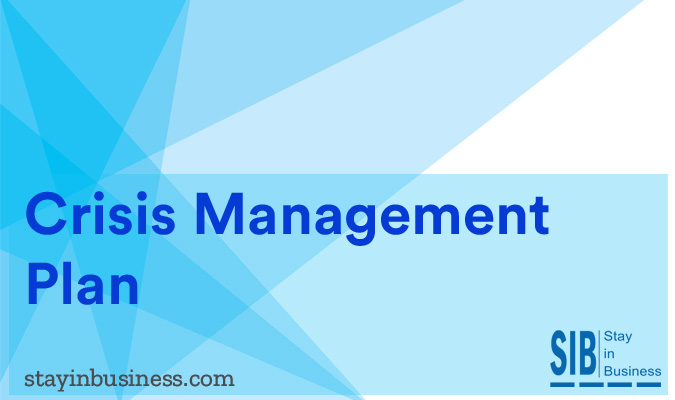
A crisis can befall a business at any time. Prudent businesses take steps necessary to mitigate its impact on its revenues, employees, customers, suppliers, brand value and reputation. Customer goodwill, though an intangible notion, is difficult to build but can easily dissipate if a crisis or disaster is not handled properly.
Drawing up a astute crisis management plan requires initiation and support of the top management of the business. Just leaving it to a junior manager, without the proper authority, is a sure-fire way of putting together a Crisis Management Plan which looks good on paper but is useless in practice. Follow these easy steps to formulate a sound Crisis Management Plan.
Step 1 – Draw up a Plan
A crisis management plan should have clear objectives. Some of the main objectives of a Crisis Management Plan are given below:
- Safety of employees, visitors and public
- To update all stakeholders in real time so that the source of information is accurate and authentic and not wild rumors
- Survival and recovery of the business with minimal damage
The Crisis Management Plan should include specific actions that have to be taken by the business in a crisis. The roles and responsibilities of key staff should be clearly articulated and delineated.
Step 2 – The Spokesperson
Having a disaster strike an organization is bad enough, but to earn ‘bad press’ due to conflicting information emanating from the business could turn into a public relations disaster. Therefore, the business should speak only with one voice i.e. through the person appointed as the Spokesperson under the Crisis Management Plan. The Spokesperson should be able to articulate the business’s information effectively, as well as field media questions with aplomb and élan. The business speaking with one voice will help combat adverse publicity to a large extent.
Step 3 – Honesty, Sincerity and Openness
The crisis should be dealt with honestly and with openness. When there is a lack of transparency and honesty, a feeling will be sent out that the business is trying to hide something and this will generate reams of bad press. Transparency and honesty should be consistent across all media – print, visual, social etc.
Step 4 – Update employees at regular intervals
It is important to keep all employees updated at regular intervals. When there is a crisis, it will be a trying time for all stakeholders. As far as employees are concerned, they will have the added fear of loss of employment. When they are informed of the factual position at regular intervals, it will set their minds at rest and they will be supportive of all efforts to establish normalcy.
Step 4 – Update customers, suppliers and other stakeholders
All stakeholders will appreciate the fact that they first got the news from the business rather than learning it from the media. This will help in earning their empathy is a valuable assets during a crisis. The Crisis Management Plan should cover this aspect i.e. of communication and updates to all stakeholders and the timelines for such action.
Step 5 – Update often and be ‘first off the block’
It is better to be extremely communicative about the crisis rather than allow rumor mongers to fill the void. As often as possible issue summary statements, updated action plans and also keep the outside world informed of any new developments, both good and bad, but clothed in the appropriate language and tenor.
Step 6 – The Social Media
In today’s world, the social media is an important factor in disseminating news. Since it is at everyone’s finger tips, it can do great harm if not harnessed properly. This shows the importance of keeping a constant stream of updates coming from the business. Being trolled on the social media could become viral and decades of goodwill, built up assiduously, can disappear in an a short period of time.
Step 7 – The succession plan
The Crisis Management Plan should have a clear cut plan of succession. In a crisis, key personnel may be incapacitated or dead and next person as per the plan of succession should step into the void and fill in the shoes of his predecessor.
A Crisis Management Plan is an essential survival tool during a crisis. During a crisis, there is no time to think strategy and tactics and actions should be carried out as second nature due to the training received as per the Crisis Management Plan.




